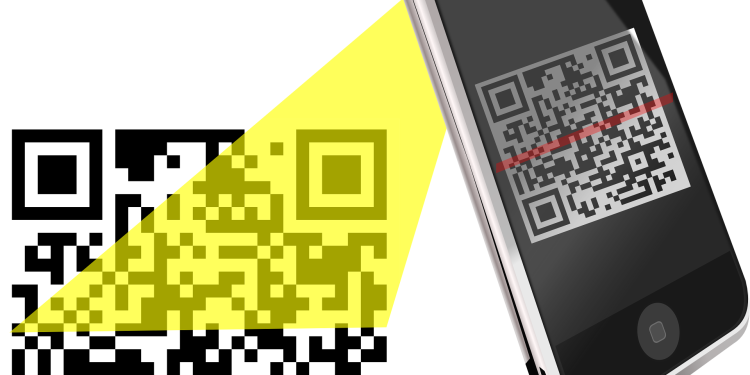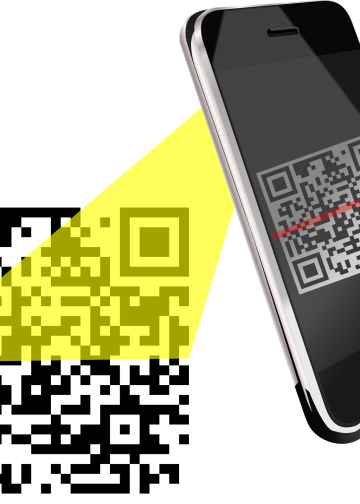Key Takeaways
- Barcodes are simple, cost-effective, and widely used for product tracking, inventory, and retail applications.
- QR codes hold more data, scan from any angle, and are perfect for marketing, digital payments, and consumer interactions.
- Barcodes are best for straightforward inventory systems, while QR codes excel in dynamic, digital environments.
- Many businesses benefit from using both technologies — barcodes for logistics and QR codes for customer engagement.
- Understanding the strengths and limitations of each helps businesses streamline operations and enhance customer experiences.
Barcode vs. QR Code: Understanding The Differences And Uses
In today’s digital world, barcodes and QR codes play essential roles in inventory management, marketing, and consumer interactions. While both serve as machine-readable data representations, their design, functionality, and applications differ significantly. Understanding these differences can help businesses and individuals choose the right technology for their needs.
This article explores the key distinctions between barcodes and QR codes, their advantages, limitations, and where they are best applied.
What Is A Barcode?

A barcode is a visual representation of data using parallel lines of varying widths and spacing. It encodes information in a way that can be scanned by optical devices such as barcode readers or smartphones.
Types of Barcodes
Barcodes come in two primary categories:
- 1D (Linear) Barcodes – These are the traditional barcodes seen on product packaging. Examples include:
- UPC (Universal Product Code): Commonly used in retail for pricing and inventory management.
- EAN (European Article Number): A variation of UPC, widely used in Europe.
- Code 39 and Code 128: Used in logistics and warehousing for tracking shipments and inventory.
- 2D (Two-Dimensional) Barcodes – These store more information than 1D barcodes. Examples include:
- Data Matrix Codes: Used in manufacturing and healthcare for tracking small items.
- PDF417 Codes: Found on IDs, driver’s licenses, and boarding passes.
What Is A QR Code?

A QR (Quick Response) code is a two-dimensional matrix barcode that can store more complex data, such as URLs, contact details, or payment information. Unlike traditional barcodes, QR codes can be scanned from any direction and still provide accurate results.
Types Of QR Codes
QR codes can be categorized based on their usage and structure:
- Static QR Codes: The data is permanently embedded and cannot be changed once generated. Used for URLs, product information, and basic marketing.
- Dynamic QR Codes: The data can be updated even after generation. Useful for tracking, payments, and marketing campaigns.
Key Differences Between Barcodes And QR Codes Advantages And Disadvantages
Barcode
Barcode Advantages
- Simple and efficient: Works well for basic inventory tracking.
- Low cost: Barcode labels are inexpensive to print.
- Fast scanning: 1D barcodes can be read quickly with laser scanners.
Barcode Disadvantages
- Limited data storage: Cannot store detailed information.
- Directional scanning required: Must be aligned properly to be read.
- Easily damaged: Scratches or smudges can make it unreadable.
QR Code
QR Code Advantages
- High data capacity: Can hold URLs, contact info, and multimedia.
- Fast scanning from any angle: More user-friendly than barcodes.
- Error correction: Can still be read if partially damaged.
- Versatile applications: Used for marketing, payments, and digital interactions.
QR Code Disadvantages
- Requires a smartphone or app: Not all devices have built-in QR scanners.
- Takes more space: QR codes are larger than traditional barcodes.
- Overuse in marketing: Many QR codes lead to unnecessary or poorly designed web pages.
Where Are Barcodes Used?
Barcodes are ideal for industries that require fast and accurate data retrieval:
- Retail: Used on product packaging for pricing and stock management.
- Healthcare: Found on medication labels and patient wristbands for tracking.
- Logistics: Helps in tracking shipments and warehouse inventory.
Where Are QR Codes Used?
QR codes have expanded beyond inventory tracking into digital and interactive applications:
- Payments: Used in mobile payment systems like Apple Pay and Google Pay.
- Marketing: Found on posters, flyers, and business cards for easy website access.
- Authentication: Used for two-factor authentication and event ticketing.
Which One Should You Use?
Choosing between a barcode and a QR code depends on your needs:
- If you need simple product tracking and pricing, barcodes are sufficient.
- If you require interactive, digital, or marketing applications, QR codes are the better choice.
- For logistics and inventory management, a combination of both may be best.
FAQs
What is the main difference between a barcode and a QR code?
A barcode is a one-dimensional (1D) code that stores data in a series of vertical lines, while a QR code is a two-dimensional (2D) code that stores data in both horizontal and vertical directions, allowing it to hold more information.
Which is better for storing more data, a barcode or a QR code?
A QR code is better for storing more data because it can hold thousands of characters, including URLs, contact details, and multimedia, while a barcode is limited to numerical or alphanumeric data.
Are QR codes safer than barcodes?
QR codes offer better security features as they can be encrypted and contain complex data structures, whereas barcodes are simpler and easier to replicate or alter.
Which one is more commonly used in retail?
Barcodes are more commonly used in retail for inventory management and product scanning, while QR codes are often used for marketing, digital payments, and website links.
Do all devices support barcode and QR code scanning?
Most smartphones can scan QR codes using their built-in cameras, while barcode scanning usually requires a dedicated scanner or a third-party app.
When should I use a barcode instead of a QR code?
Use a barcode for simple product identification and inventory management. Choose a QR code when you need to store more information, such as website links, contact details, or payment options.
Conclusion
Both barcodes and QR codes are essential in today’s digital world, each with unique benefits. While barcodes remain a staple in retail and logistics, QR codes are becoming more popular for digital interactions. Understanding their differences helps businesses and individuals maximize efficiency, security, and convenience.
By choosing the right technology for your needs, you can improve operations, enhance customer engagement, and streamline data management in various industries.























